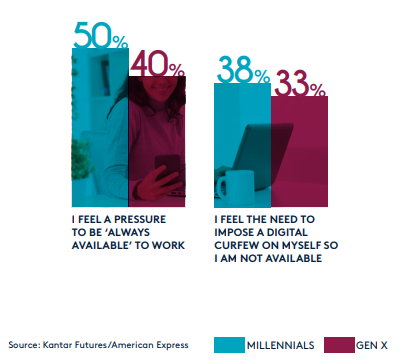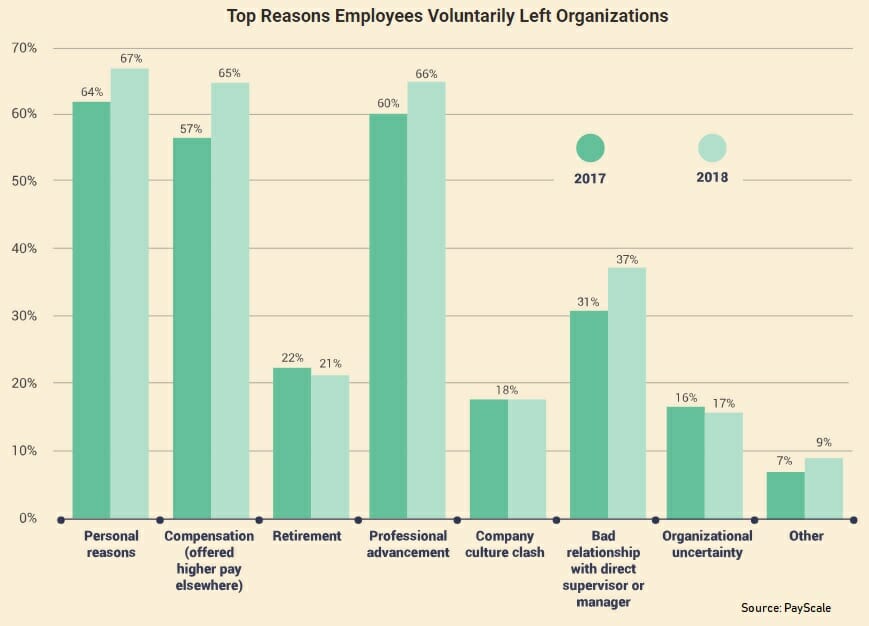Editor’s Note: It’s an annual tradition for TLNT to count down the most popular posts of the previous 12 months. This is No. 3 of the 708 articles. You can find the complete list here.
∼∼∼∼
Millennials may not be job hopping more than previous generations, considering the fact many of them are still young. However, that doesn’t lessen the effect of losing a key employee or a top performer. Retention is one issue common to HR professionals regardless of the size of the business.
Family businesses can hold their key employees through relationships. All the rest of us have to be more inventive about it. You may not be able to keep every employee from leaving, but there are smart management practices that will help.
Here are three of the more common mistakes organizations make that lead to turnover and a few ways to avoid them
Mistake 1: You ask them to work as much as you do (and don’t pay them as well)
Some in higher management are so committed to the company or the project they’re pursuing that they expect every employee to automatically feel the same way. Some companies take on one extra project that makes their team do overtime every week.
It’s one thing to see how someone would work an 80 hour week if they’re paid in equity and can become a millionaire in a decade. That’s not true about your employee who works for $60,000 a year.
Pay may not be the most important reason a person leaves, but it ranks right up there with the top three.
If 40+ work weeks are the norm in your shop, making a change will make a difference. Not only will that help retain workers, but perhaps surprisingly, productivity and quality improve when workers aren’t consistently expected to put in long hours.
Research from Stanford University and IZA finds, “Employees at work for a long time may experience fatigue or stress that not only reduces his or her productivity but also increases the probability of errors, accidents, and sickness that impose costs on the employer.”
In the U.K., overtime is so prevalent that half of all men work more than 4 overtime hours a week. The median for women is about 2.7. In the U.S. 25% of all workers average more than 41 hours a week; 16.4% average 49 or more hours a week.
An Amex study shows that half of millennials feel pressured to be available for work at all times.
The more overtime you ask of your employees, the more stressed they become, and the more likely they are to look for another job.
It’s also critical that you pay everyone fairly. Admittedly, most people tend to think they’re underpaid; PayScale found only one-in-five thought they’re pay was right. With greater pay transparency and frank conversations with managers, employees can come to at least understand how their pay was determined and recognize that there is an objective process. (That means, of course, you need to have one.)
Mistake 2: You aren’t giving them the chance to learn new skills
Amex research suggests that one of the three distinctive millennial values is the desire to solve challenging tasks in creative and meaningful ways. Gallup says development is a top factor in retaining millennials:
“59% of millennials say opportunities to learn and grow are extremely important to them when applying for a job. Comparatively, 44% of Gen Xers and 41% of baby boomers say the same about these types of opportunities.”
It’s also important to provide workers with meaningful work. Both Gen X and millennials say they need work that they enjoy doing; they are driven more by a sense of purpose and meaning.
Without understanding the importance and significance of their work and the opportunity to develop in their career, you’re practically guaranteeing turnover. A Korn Ferry survey found a third of people change jobs because of boredom.
Since so many people these days want to contribute something good to the world, focus them on the fact that their work changes the world to the better bit by bit.
Mistake 3: You fail to ensure management treats them well
Employees leave companies more than they do managers. But that doesn’t mean your managers don’t have a critical role to play in retaining good workers.
PayScale research says a third of people who left their job had problems with their boss.
One of the worst things a manager can do is to micromanage. The Amex research says millennials want autonomy, which is just the opposite of micromanagement. It’s not just millennials, though, who struggle with being over-managed — 59% of employees have worked for a micromanager. Of those who have been micromanaged, 68% said it decreased morale and 55% said it lowered productivity.
Train managers to coach and mentor more and manage less. This is easier said than done. Micromanagers tend not to recognize that in themselves. Here’s where some honest feedback can help. Consider a 360 feedback survey, with the results discussed between the manager and their boss or with HR.
Put great managers in the right positions
Some people are better with technology. Some people are better with people. If your employees are leaving one department or manager, it’s time to dig into the reasons. Quitting can be contagious. The last thing you want is wholesale defection. If the manager is the reason, it may be time to consider a change.
It’s even more important than when promoting someone, they be selected for their leadership skills, not because they were especially good at their job.
Conclusion
Turnover is inevitable. In the U.S., the latest numbers show voluntary turnover is running around 30% annually. In this candidate-driven hiring environment, talented workers have little difficulty finding a new job. So to avoid having the cream of your workforce move on, take action to reduce these management mistakes. In the end, it will be good for your workers and for the bottom line.
